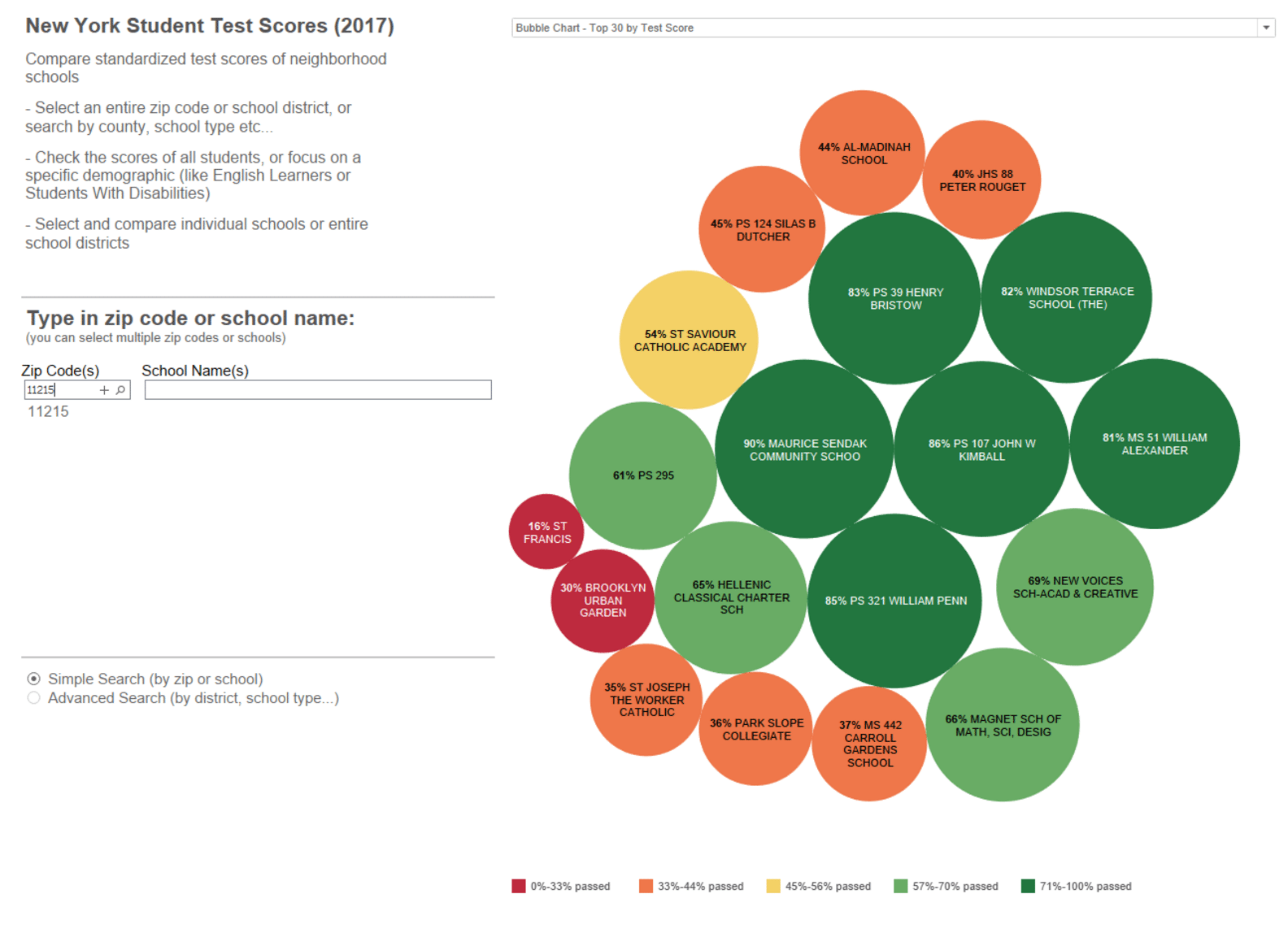Making Sense Of The New York State School Test Results (That Were Released Last Week)


Click the image to be taken to interactive feature.
Finding the right school for your child can be an overwhelming task. Yuri Nazarov, a father of three from Bensonhurst, found that out firsthand when he began researching kindergarten programs for his oldest child.
Nazarov and his wife discussed their options. Public schools, charter schools, magnet schools, and private schools were all on the table. But Nazarov learned that information on students’ performance at these schools was not easily accessible in one place. For private schools*, math and English standardized test scores were not available online at all, and the state would only provide the data upon request.
So Nazarov, who happens to be a metrics developer by trade, decided to create his own system. The resourceful dad reached out to the state’s Department of Education, and using the data crunching platform Tableau Public, he created an inventory of New York State’s schools’ statistics to help other parents make sense of the options available to them.
Disclaimer: Some of Brooklyn’s highest performing schools — like Big Apple Academy and Success Academy — are also the most controversial, tending to be either loathed or loved, with little in-between. Parents can visit Inside Schools for a more qualitative analysis of individual schools.
The easy-to-use chart Nazarov created allows any parent in New York to find the top performing schools, based on math and English scores, while controlling for factors like district, geographic area, special learning needs, race, and religious affiliation.
Data allows parents to visualize which schools are best for their child in a color-coded bubble, square chart or a map, with bubbles growing greener and larger for better-performing schools.
For example, below is a bubble chart of the top 20 Catholic schools in Brooklyn ranked by percentage of 4th graders who passed math (St. Bernadette‘s is high on the list):
Interested in Jewish schools? Here are your options in southern Brooklyn, but you can search across the whole borough:
Similarly, if geographic convenience is important to you, these are the top performing schools, both public and private, when it comes to 4th-grade math in zip code 11215:
If you already have a list of schools you want to focus on, you can select them one by one into a custom comparison list (this works on the computer and a tablet, but not on the smart phone):
The more the criteria are narrowed down, the more useful the chart becomes. For example, say you are a newcomer to this country, live in District 20, and it’s important that your children who are still learning English perform well in math — well, then P.S. 105 The Blythebourne is probably the school for you:
Here’s another cool use for the system. According to the data, only one school district in Brooklyn is passing more than half of its economically disadvantaged students in math: District 20.
In other words, poorer kids from southwestern Brooklyn have significantly better educational outcomes than low-income kids in other parts of the borough. That is pretty useful information for less affluent families deciding where to raise their children.
Here is another use of the system: map all middle schools in Brooklyn (schools with greener and larger bubbles have better test scores).
Another scenario – let’s see all elementary schools in Brooklyn’s District 21, colored by the school type (public vs. charter vs. private). Just as before, the larger the bubble, the better the test score:
Whether you use a computer, a tablet or a smart phone, the system automatically picks the view that is optimized for your screen.
What do you think of this program? Do you find it helpful? What would you change? Share your thoughts in the comments. For questions or to report bugs, Nazarov can be reached at 29c2a79f@opayq.com.
*Editor’s note: Some of the private school don’t do standardized testing — district and charter schools are mandated to participate in the testing, but private schools aren’t. Also, some private schools hold standardized tests only in a couple of grades.